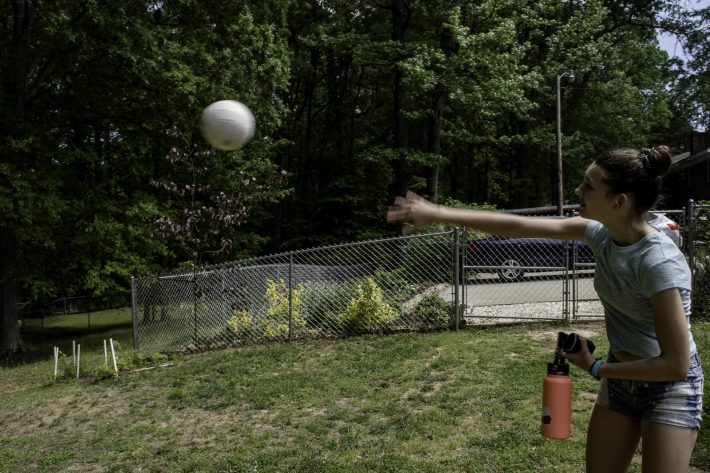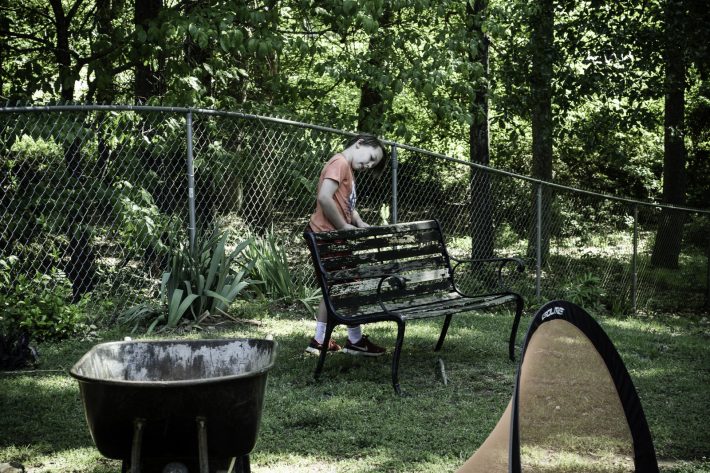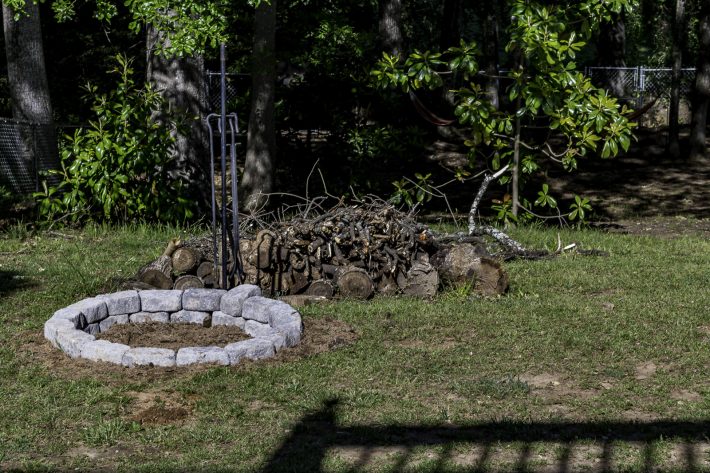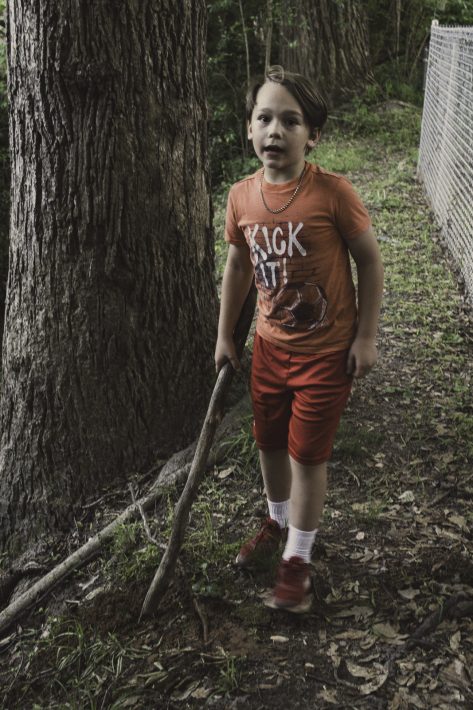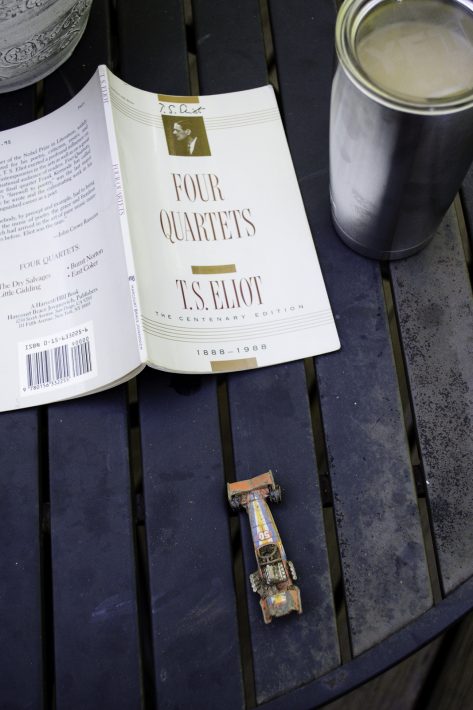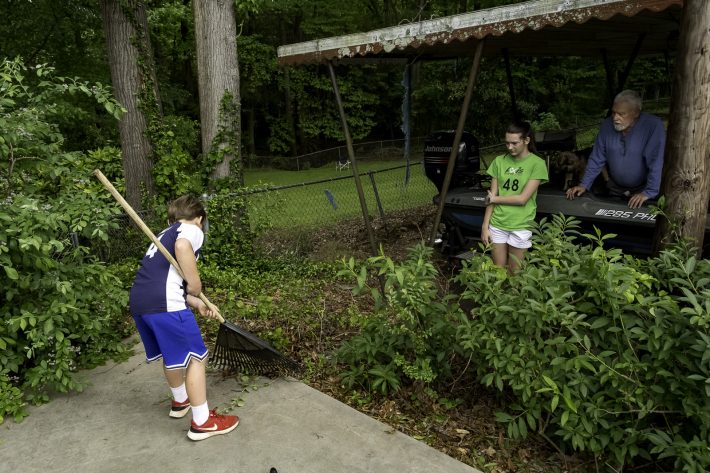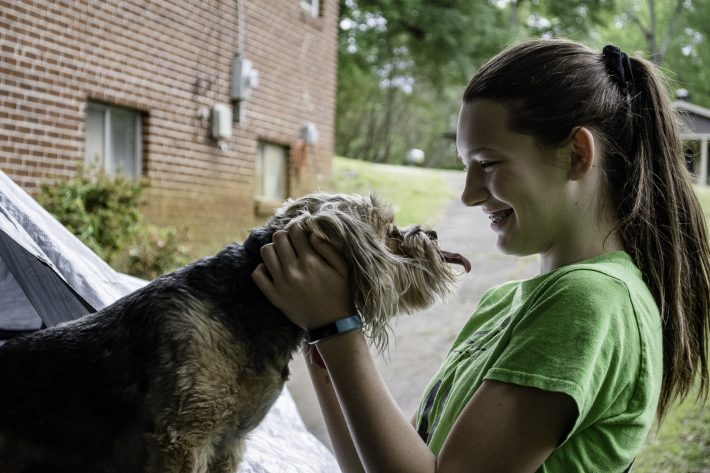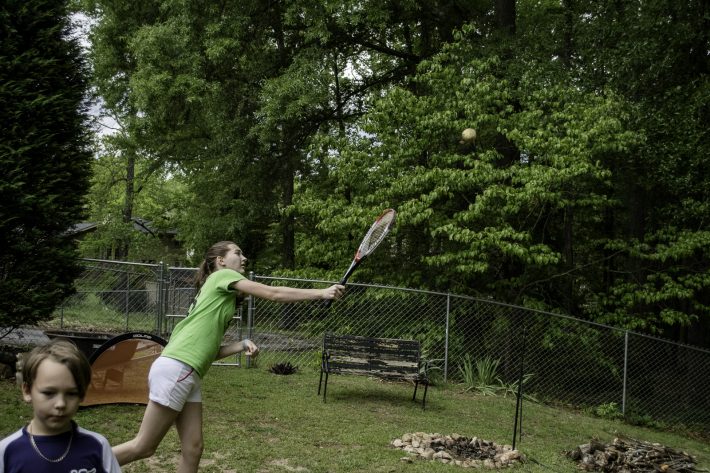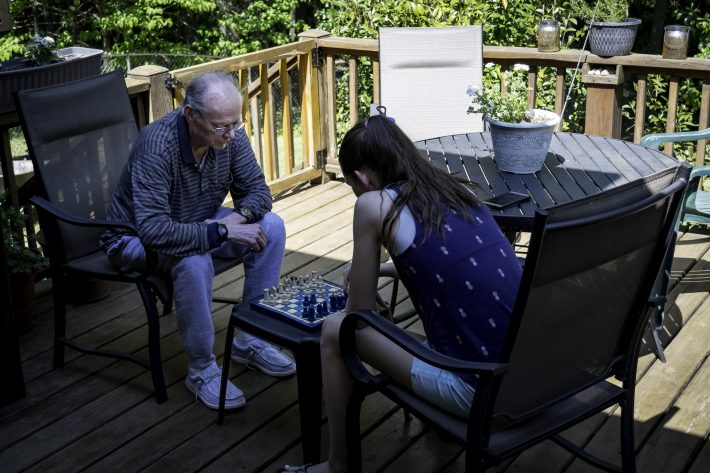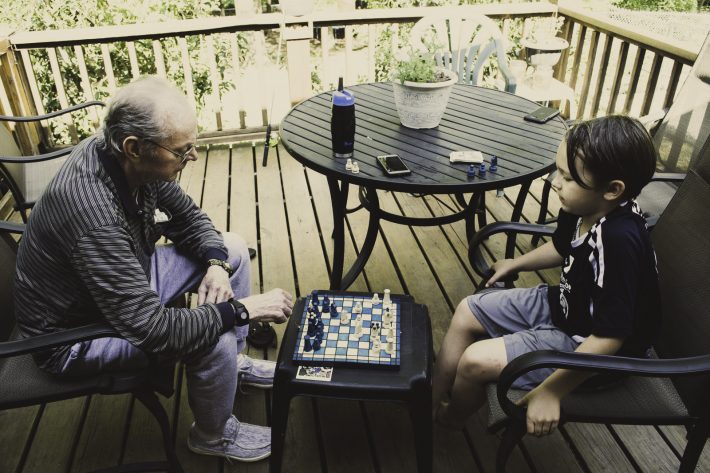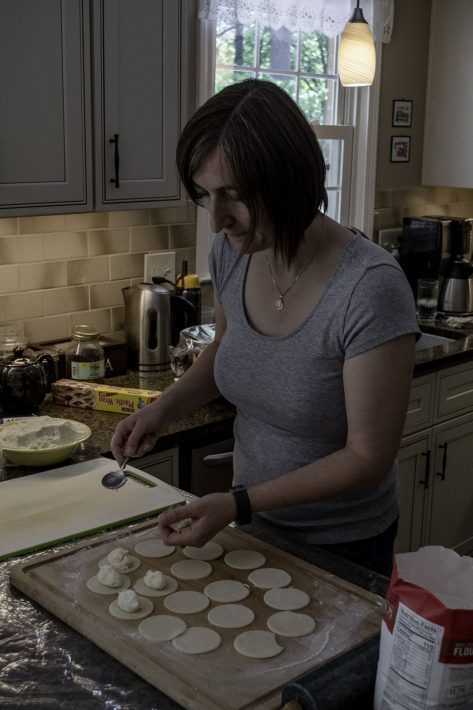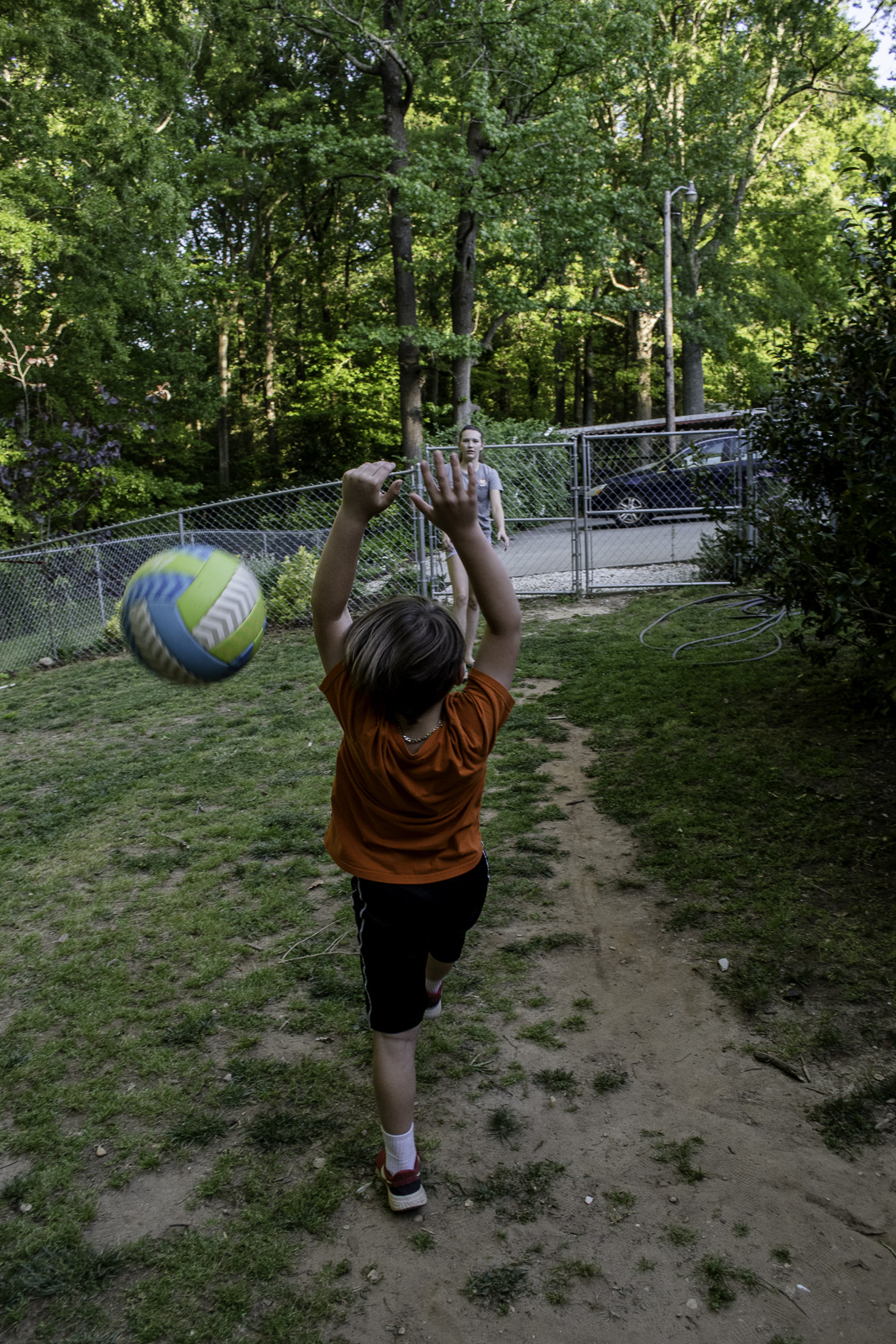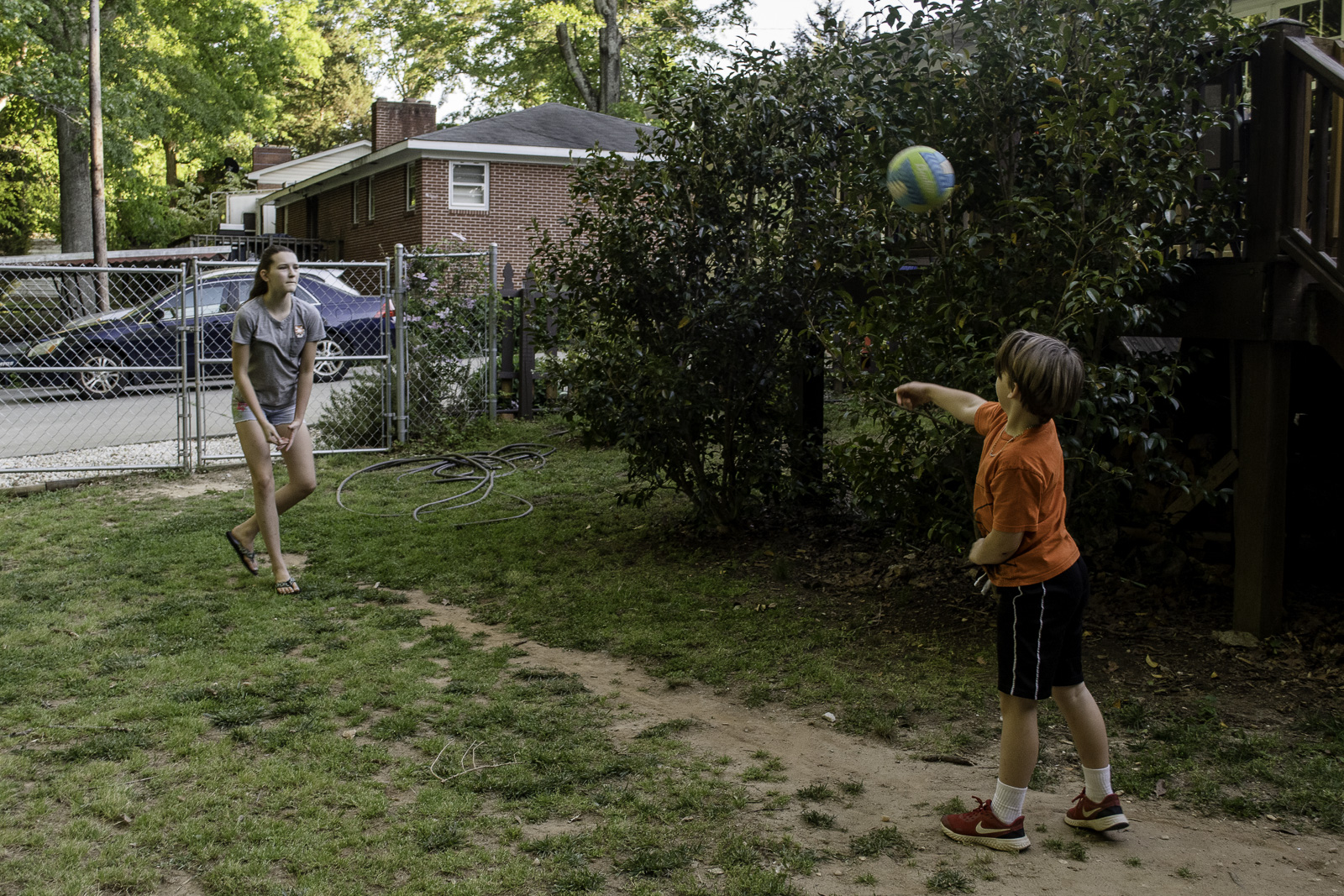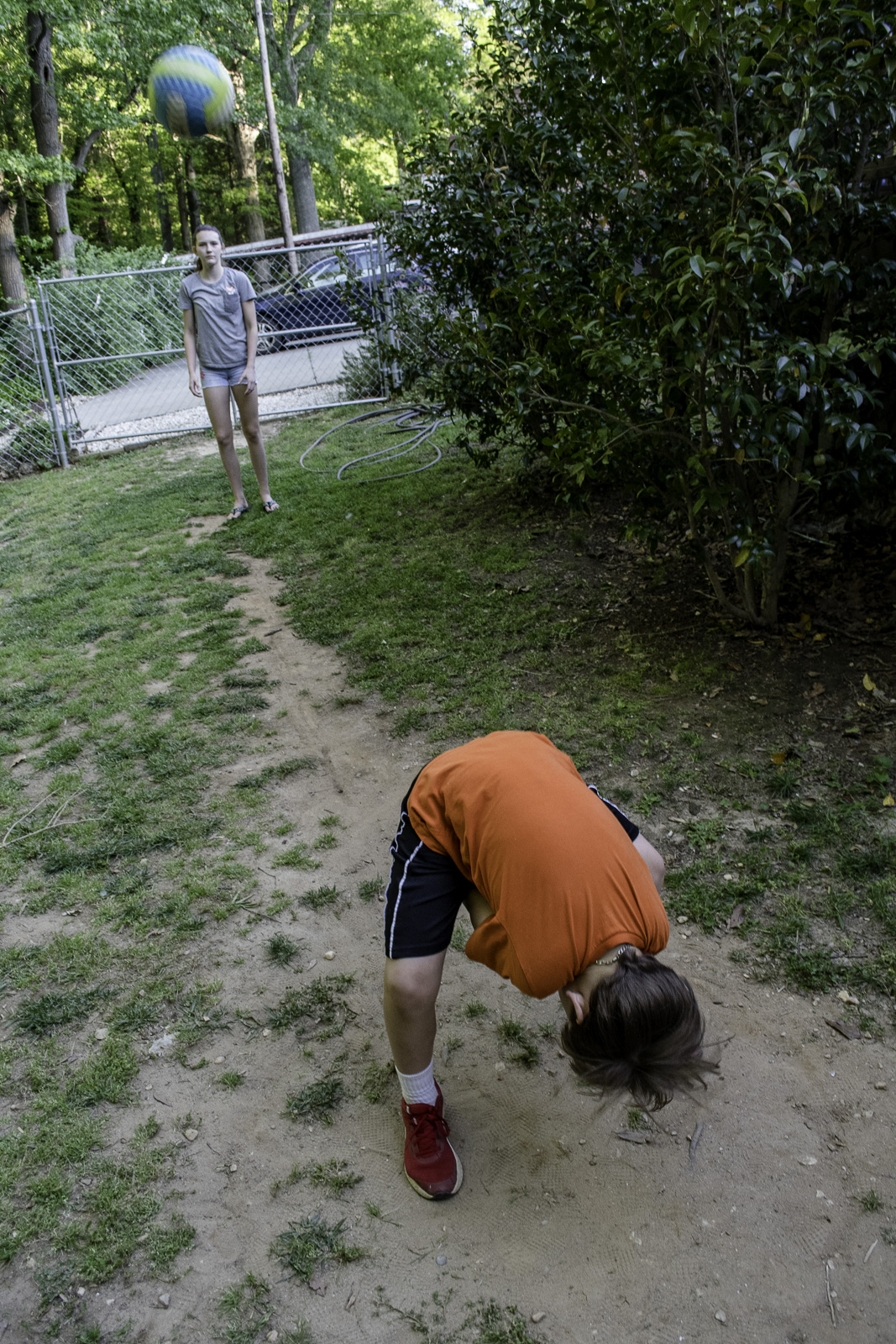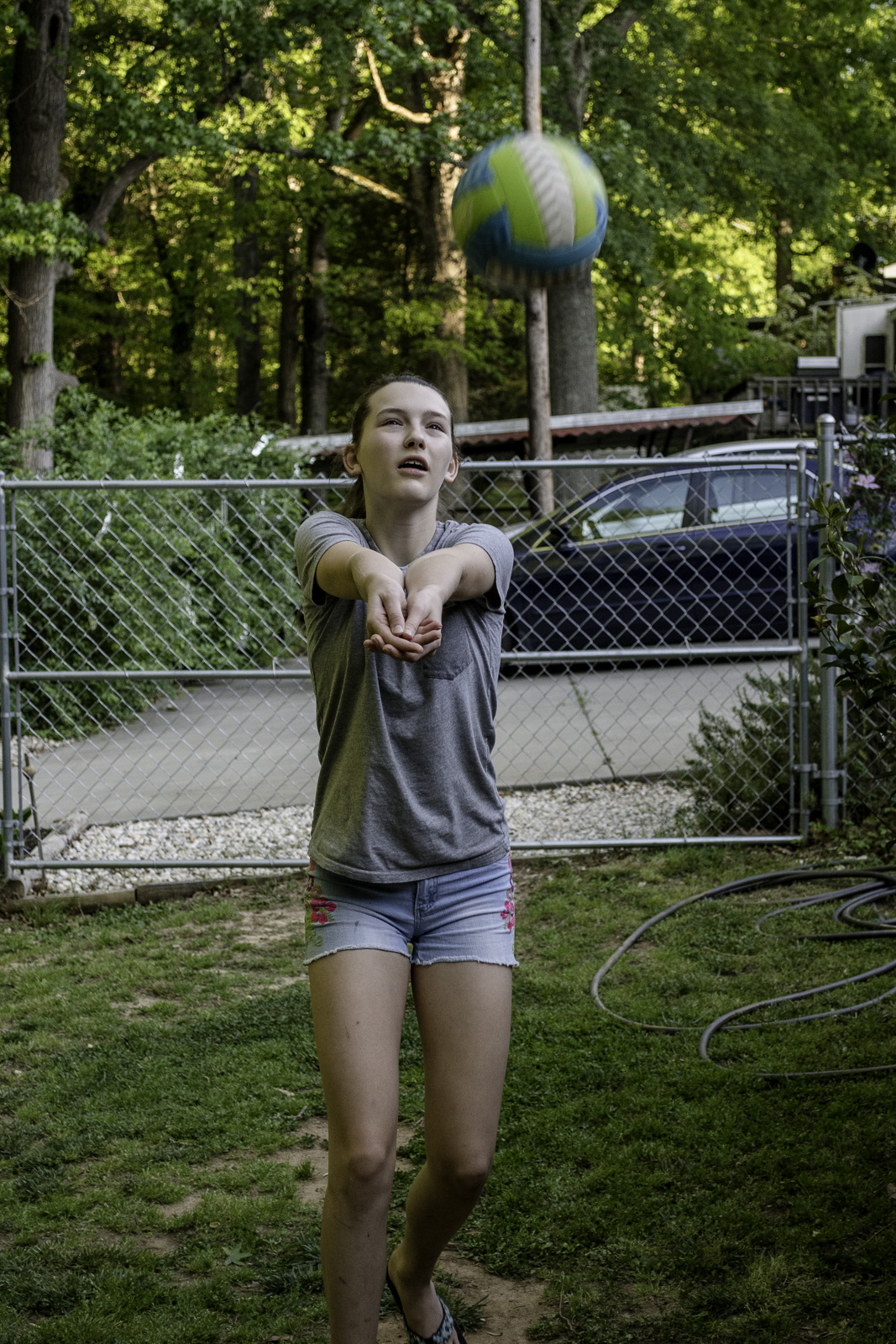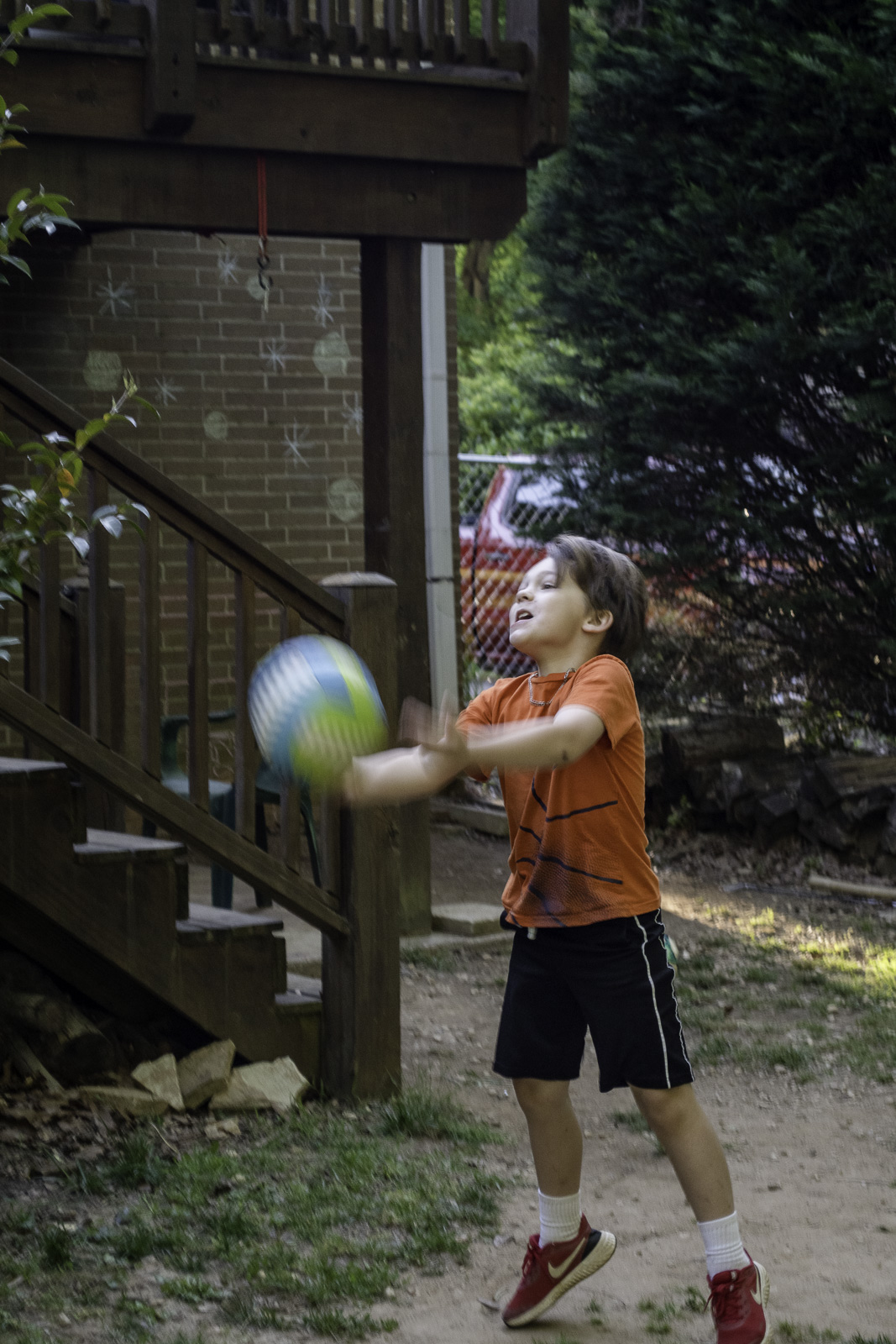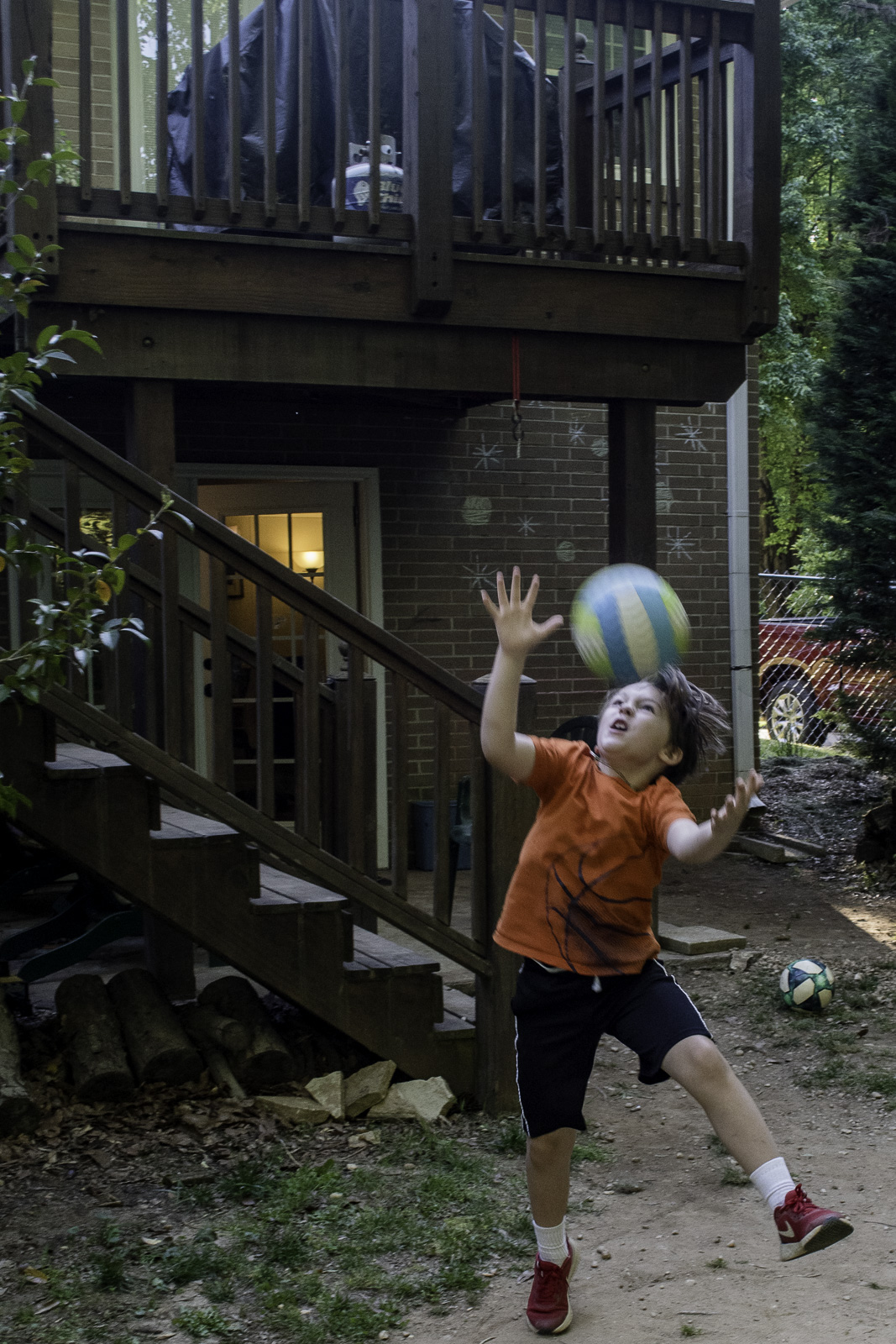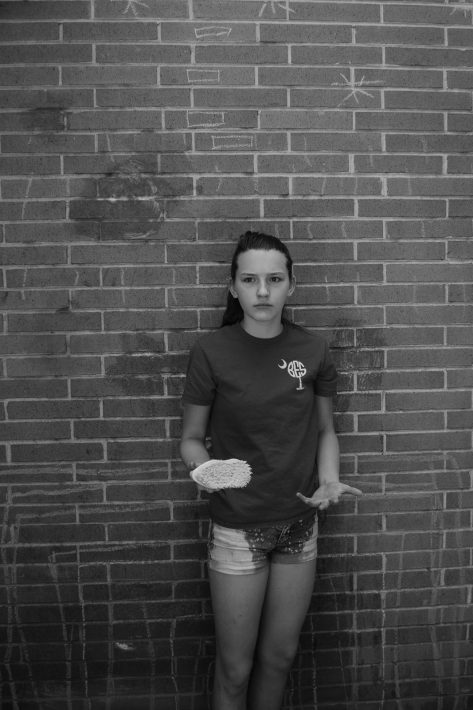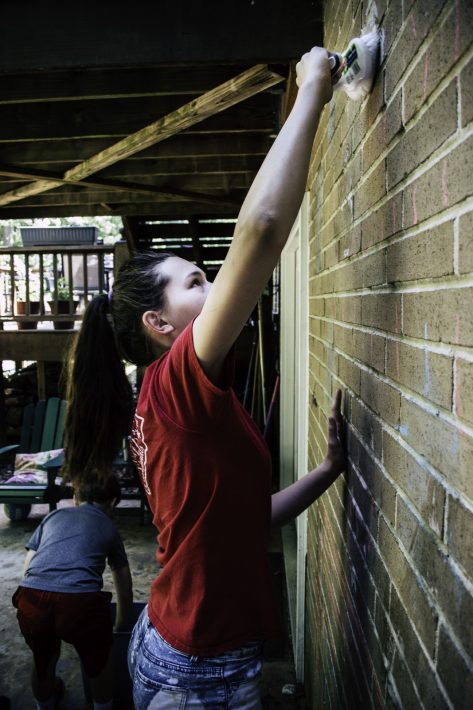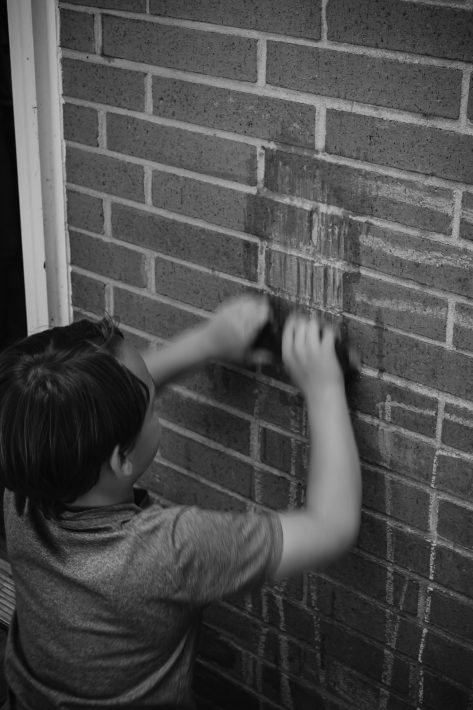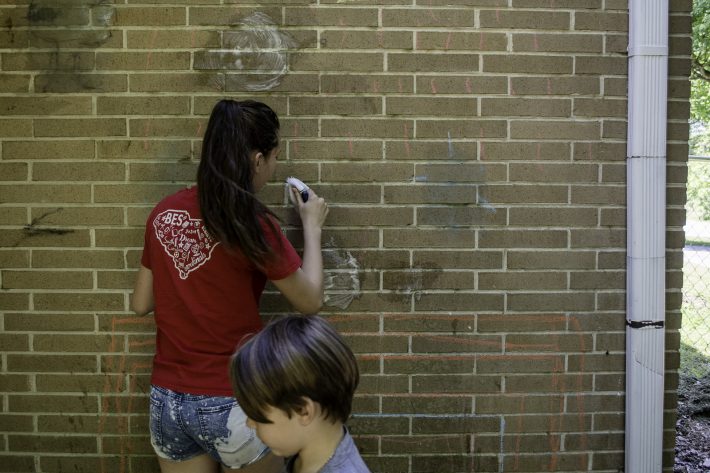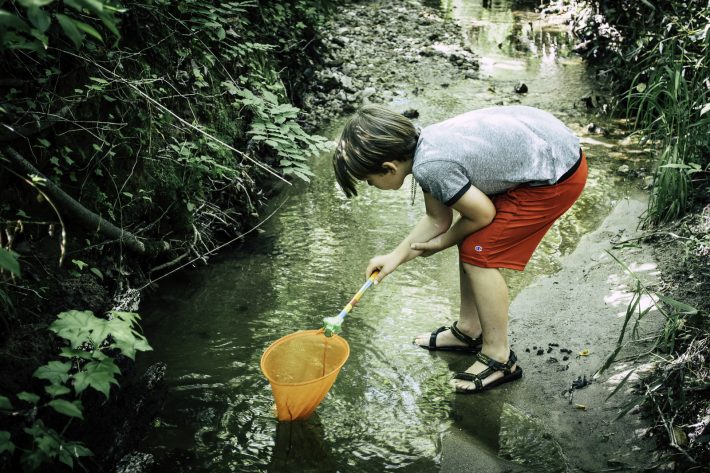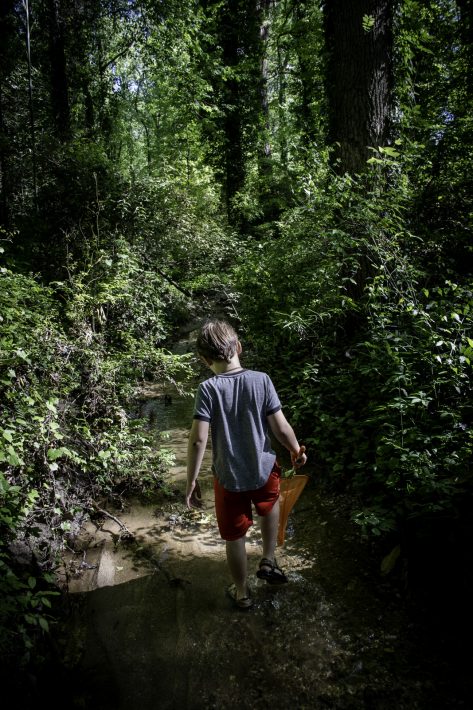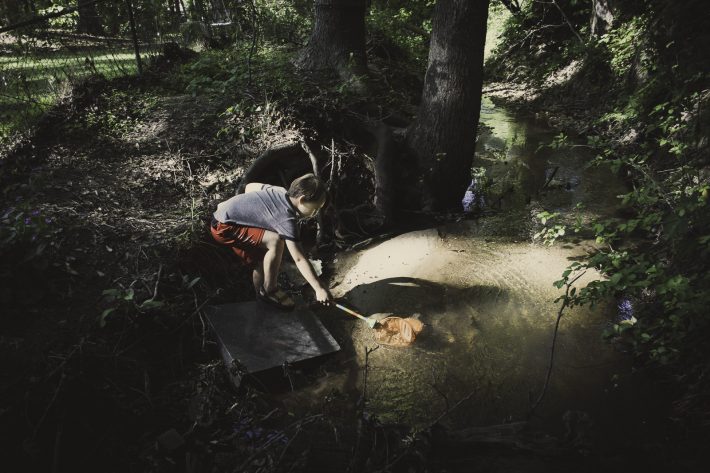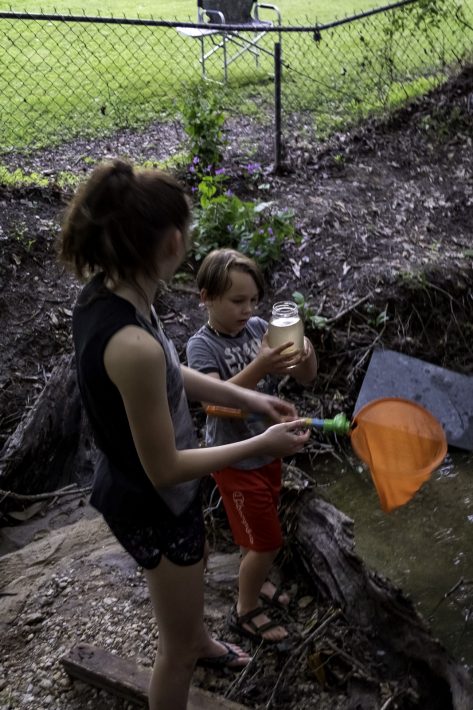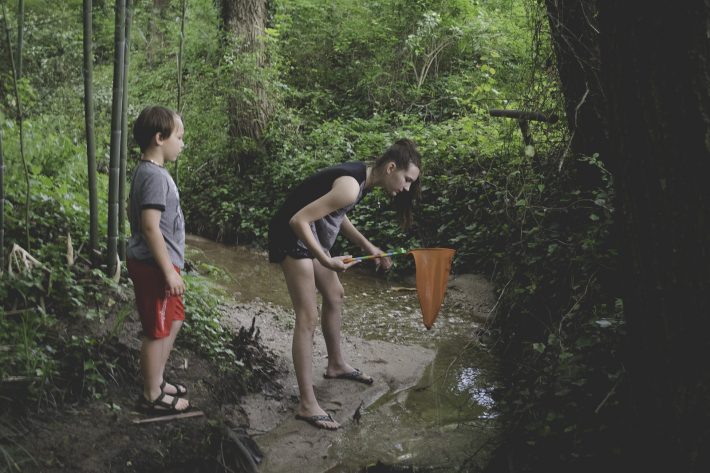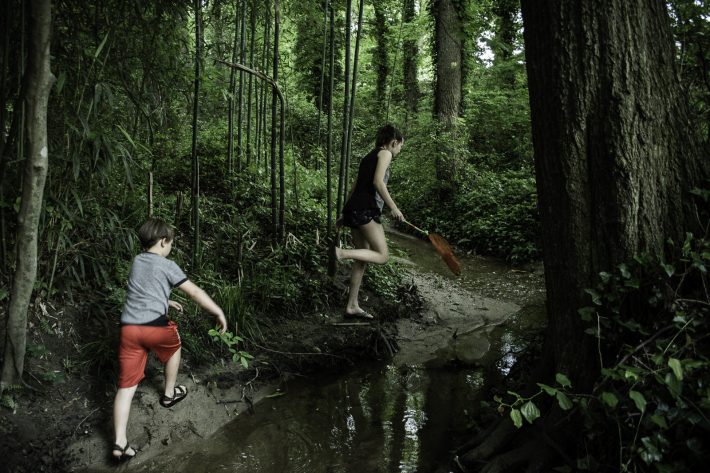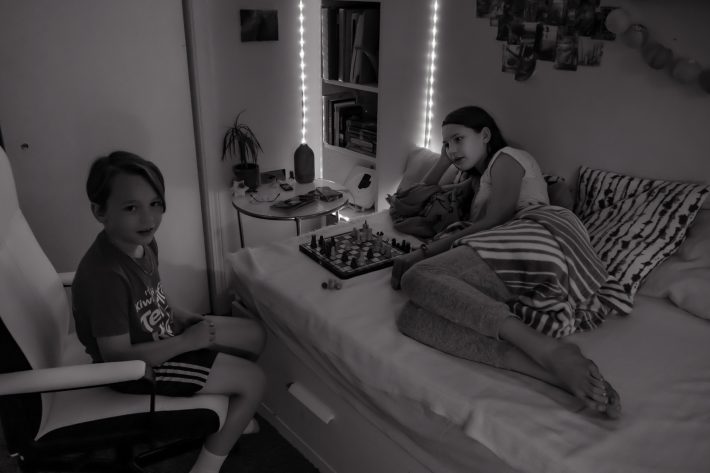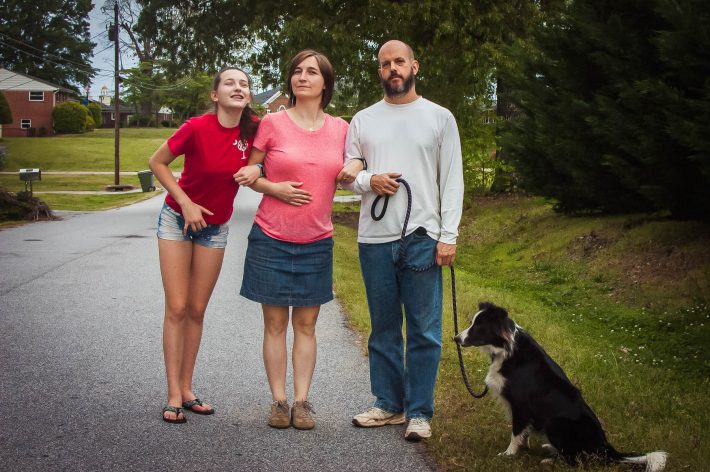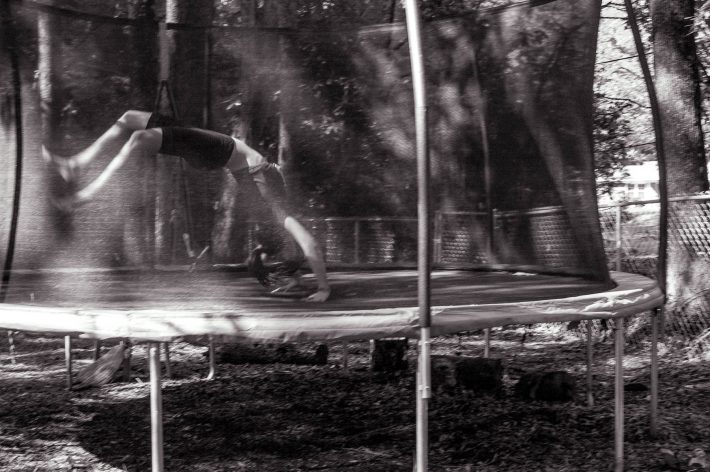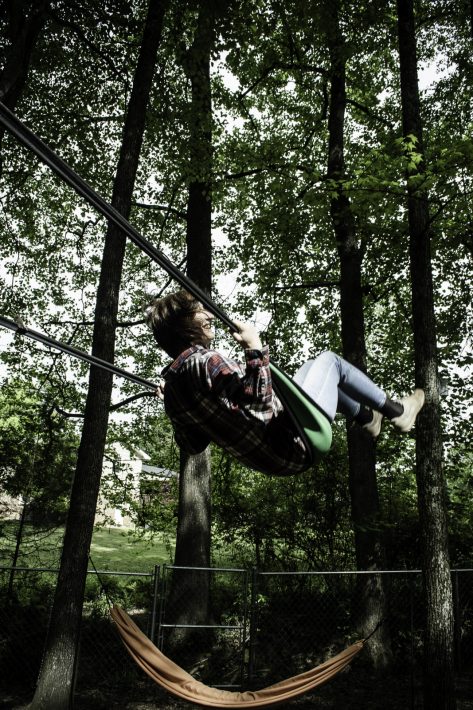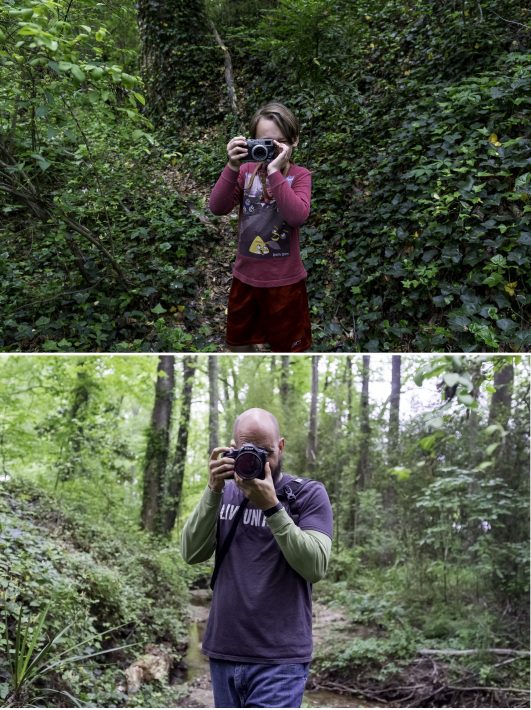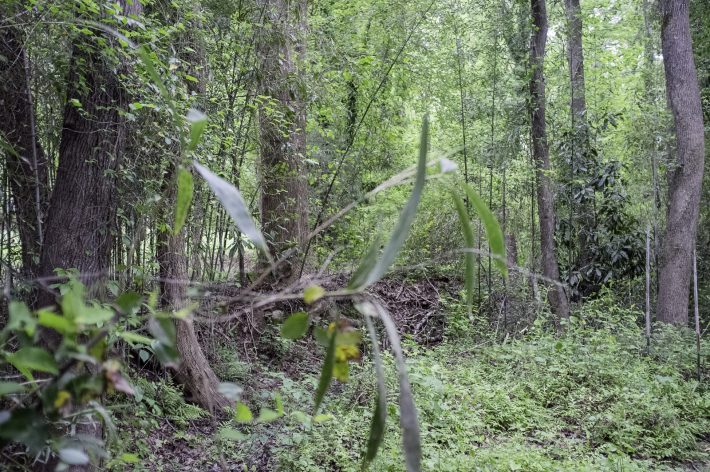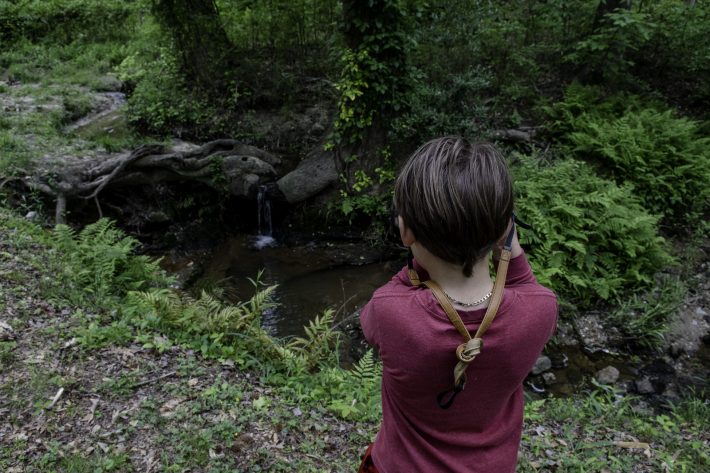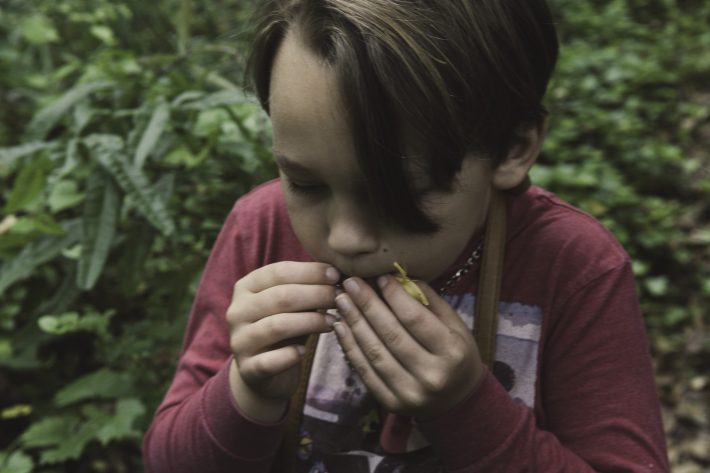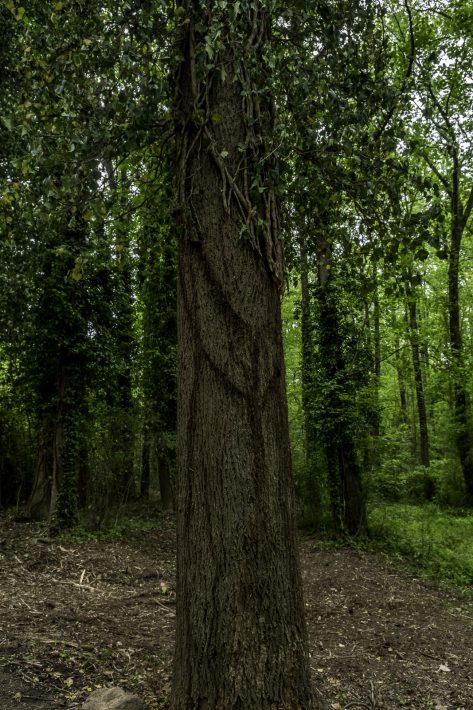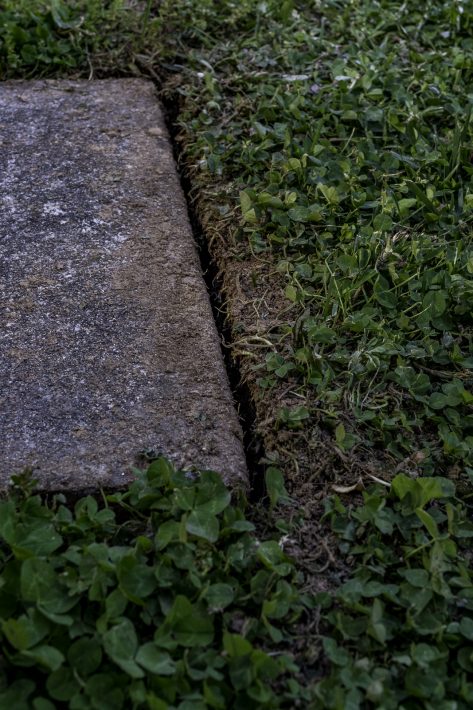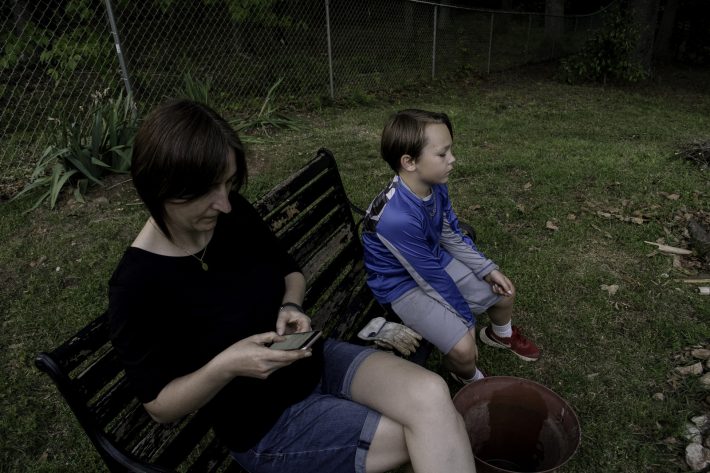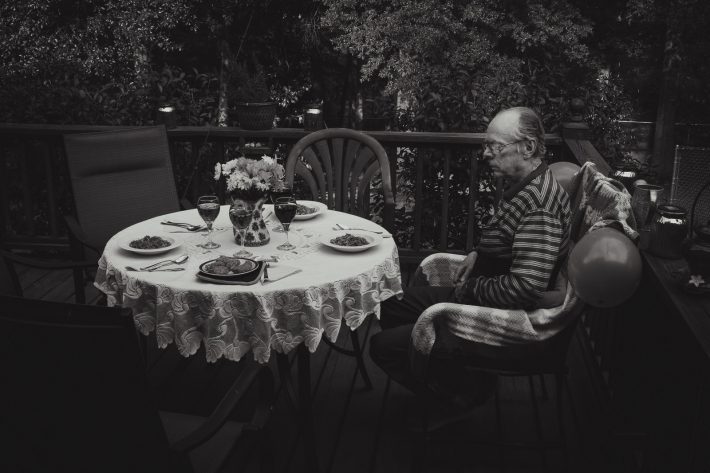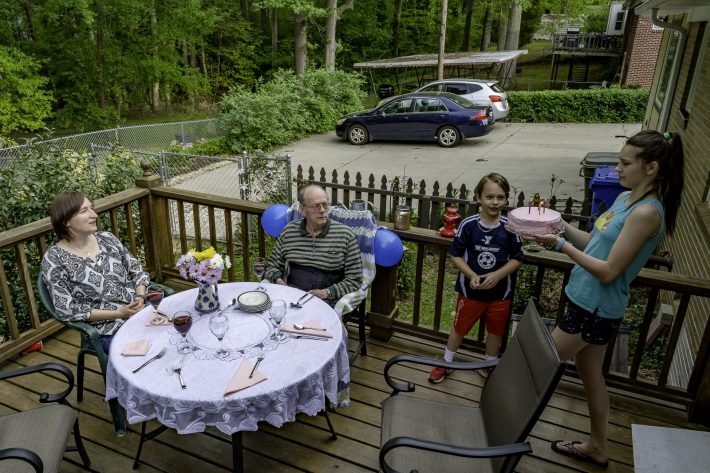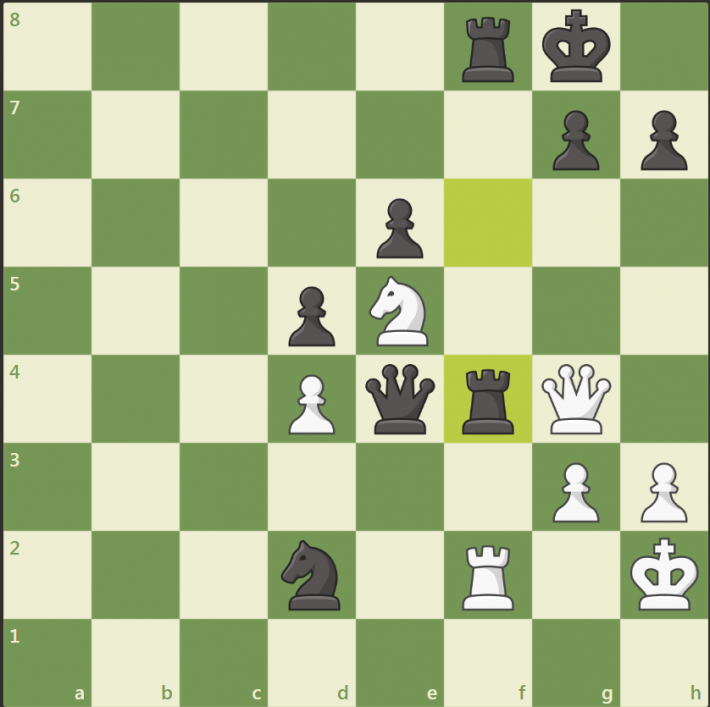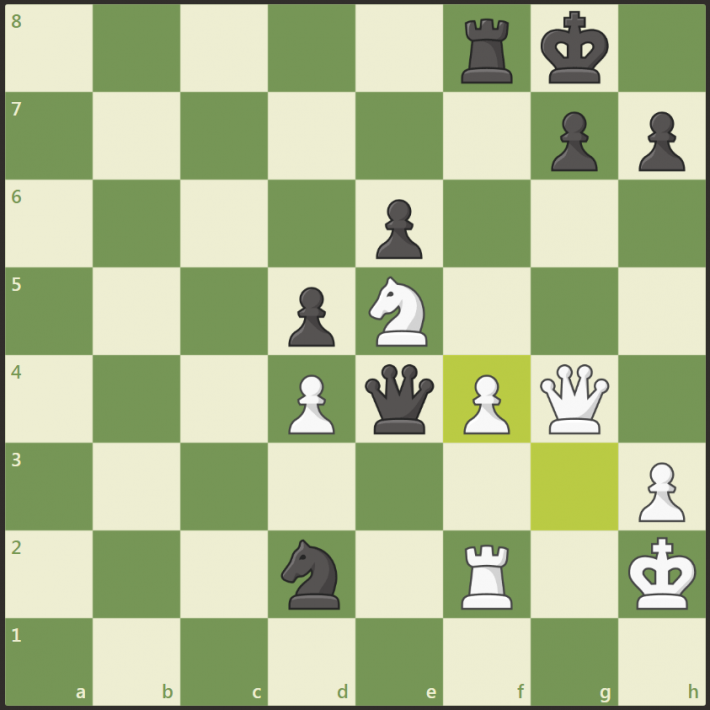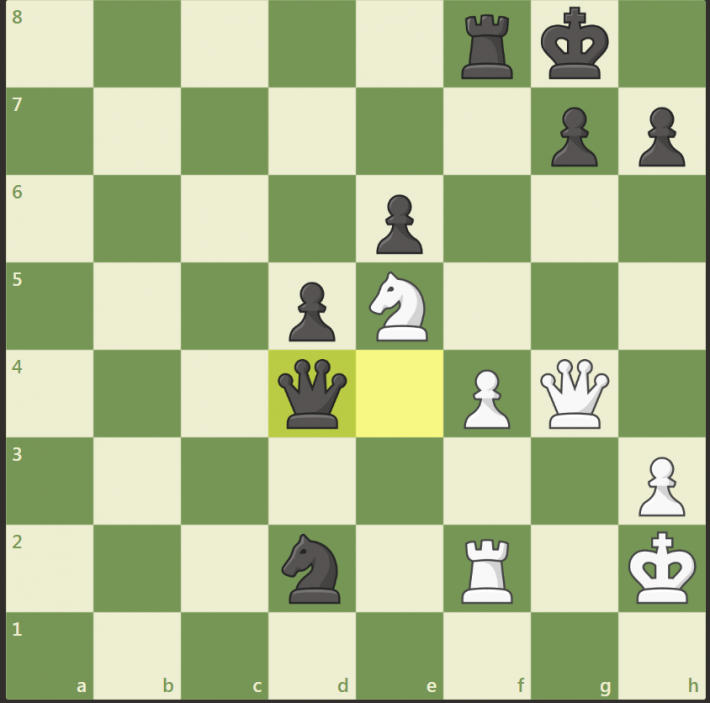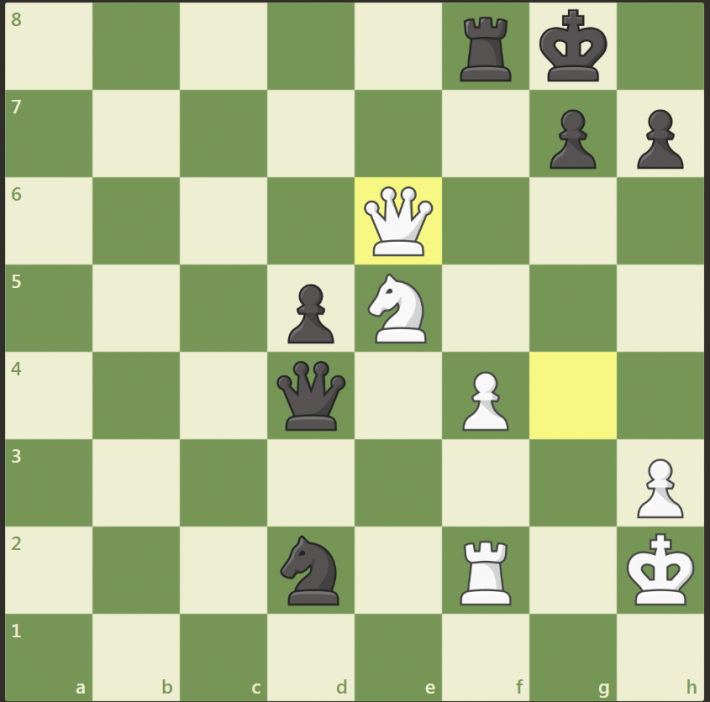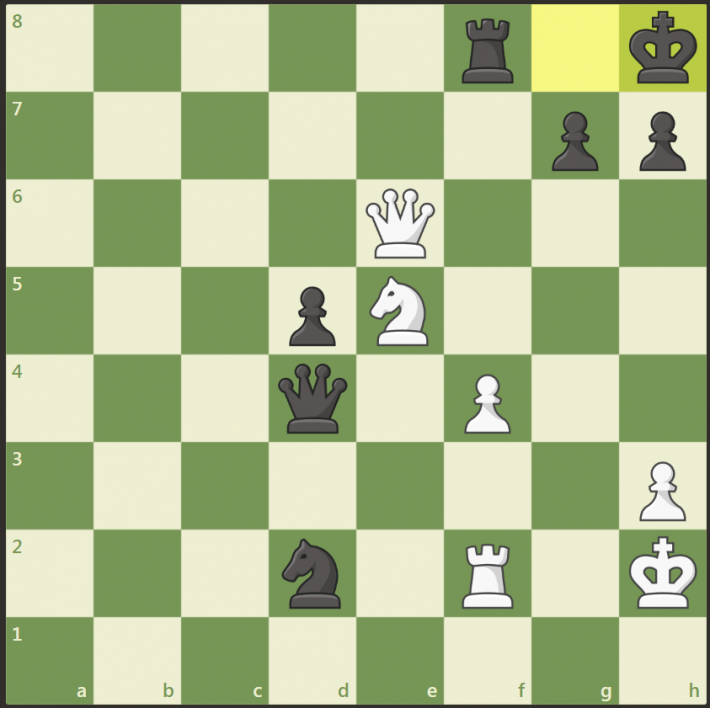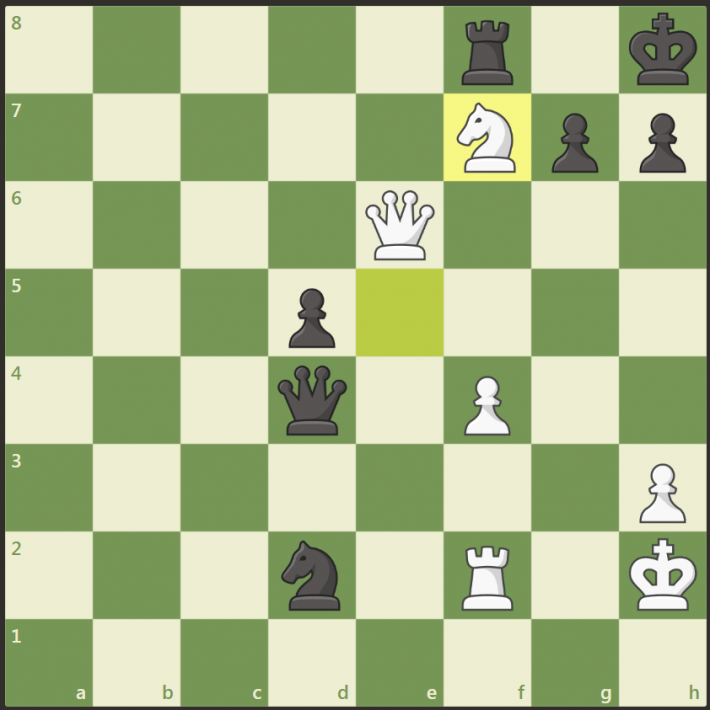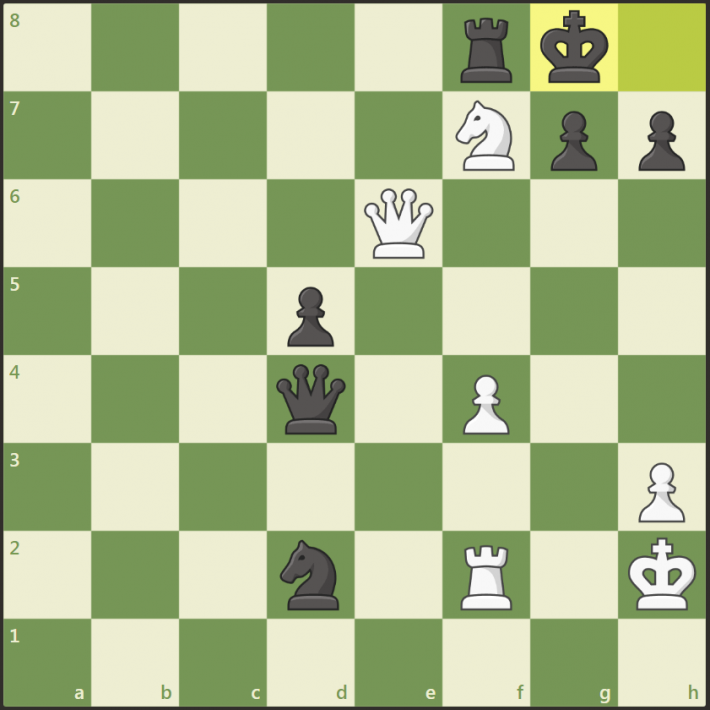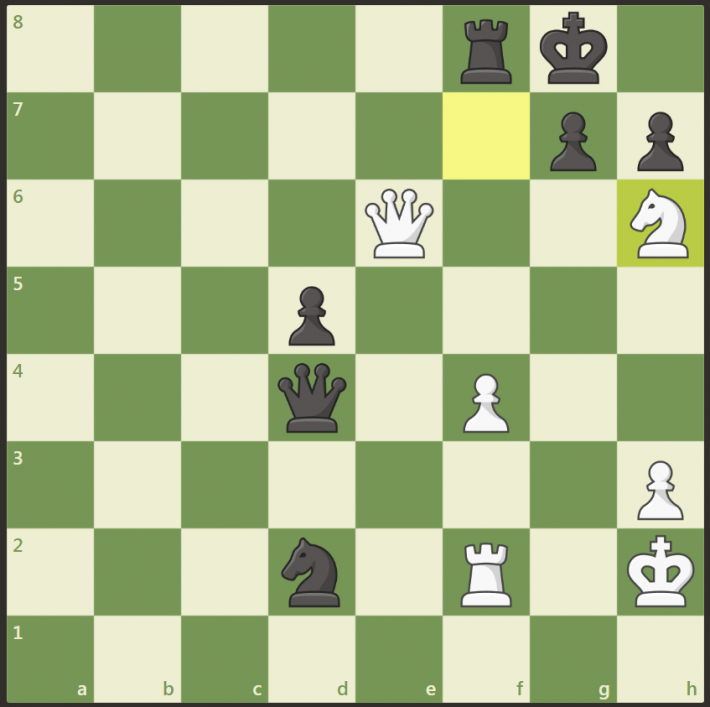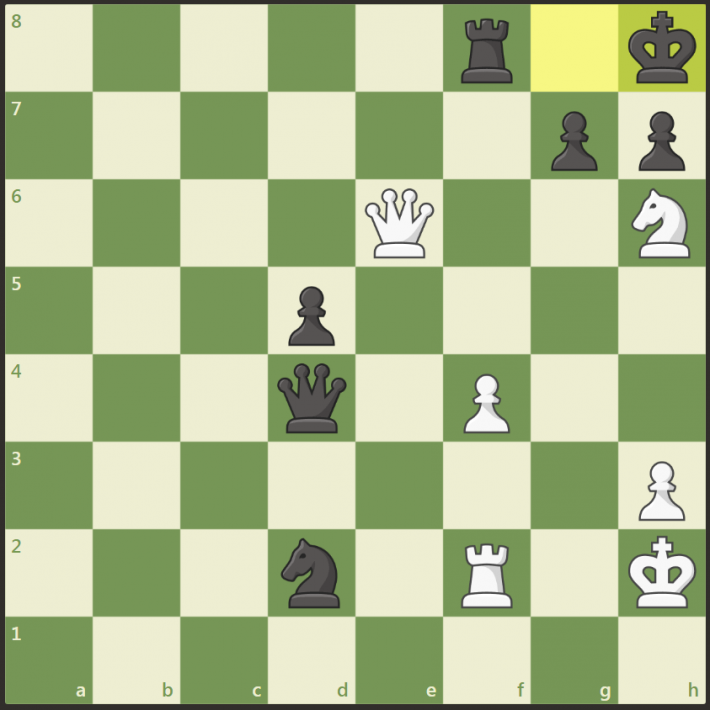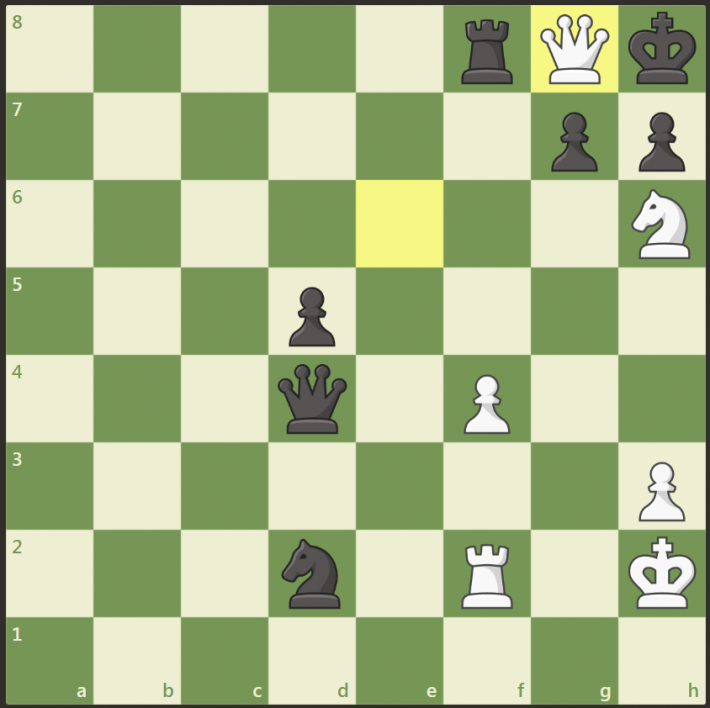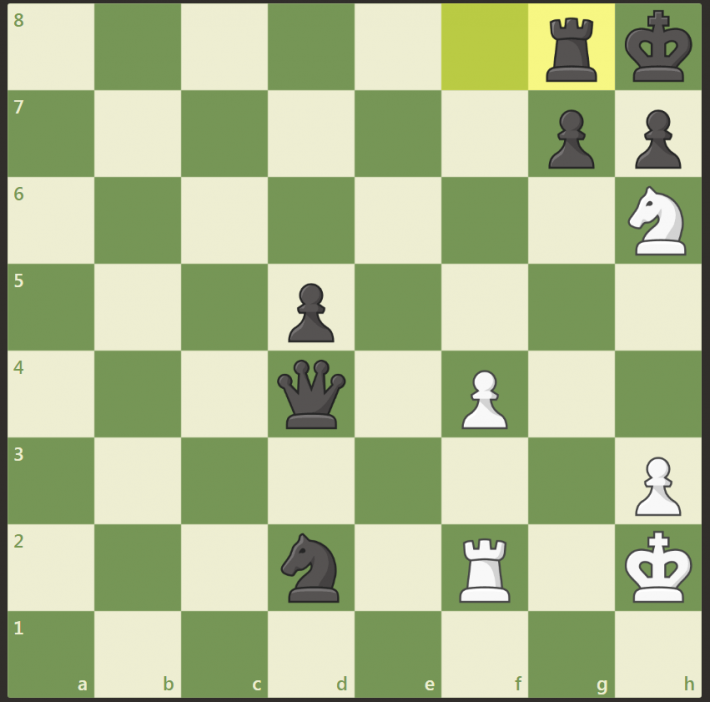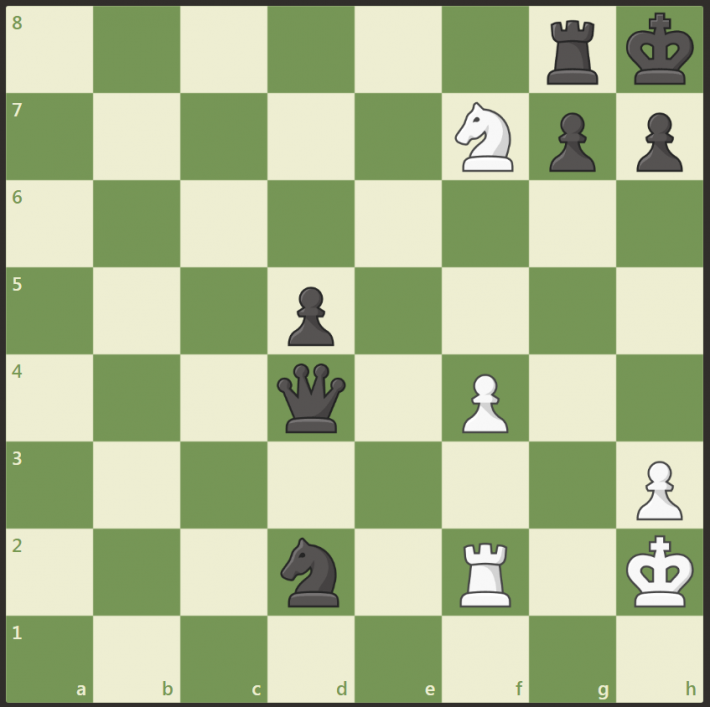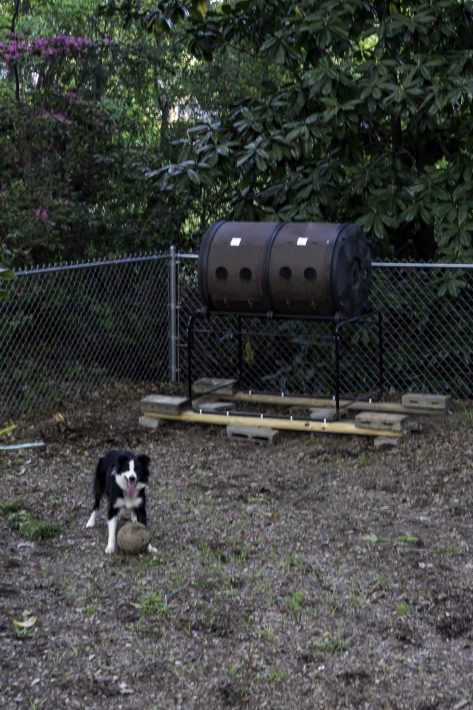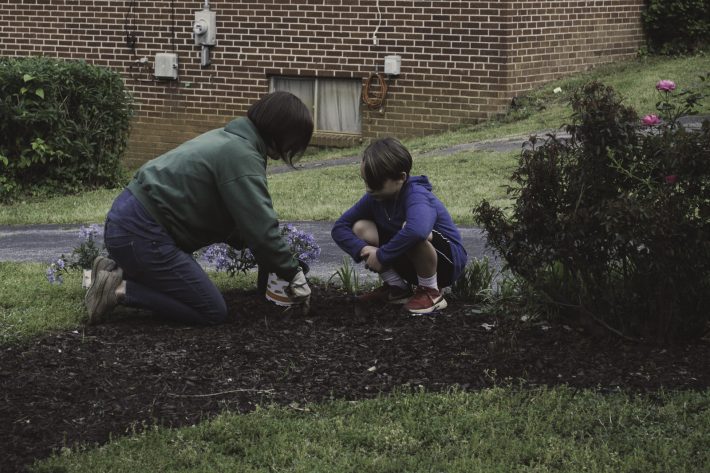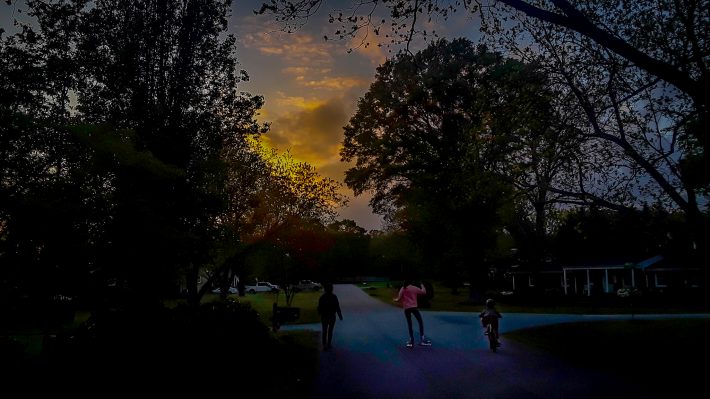During the warmer months, the creek that runs through the backyards of our street becomes a frequent destination for us. Of late, this has been because of the minnows that flourish in the small stream.
I find myself wondering how in the world the little fish survive. What do they eat? According to one site, “Bluntnose minnows eat algae, aquatic insect larvae, diatoms, and small crustaceans called entomostracans.” I don’t know if these are bluntnose minnows, but that was the first thing Google turned up when I asked, “what do minnows in streams eat.” That makes sense.
Their presence also solves another mystery: what do the snapping turtles in the creek eat? That and frogs, I guess.

We were in the creek three times today. The first was in the morning, a session that included a bit of minnow netting and some bamboo harvesting.
The Boy has been watching videos on YouTube showing young men in some south Asian country (Malaysia? Indonesia?) who dig vast underground spaces or build impressive bamboo houses using only the most primitive of tools and resources. He has decided that he wants to do the same. This morning, then, we cut down a couple of bamboo canes for this project. The Boy wanted to get more, but I put him off, hoping his obsession with this project would wane a bit when he realized it’s impossibility for a seven-year-old boy. Still, I want to encourage him to try, hence today’s harvest.
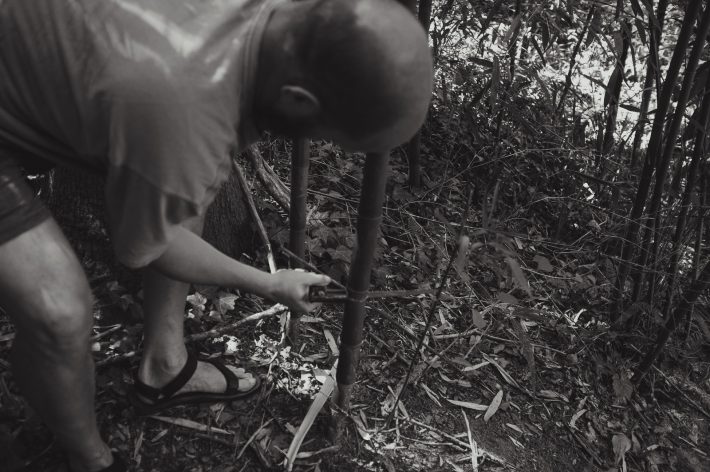
After we took down the canes, it was time for a little minnowing. The Boy as a curious and amusing approach that seems counterintuitive but works: he sneaks up to where the minnows are gathering, then leaps into the water, thrusting the net in before him and waving it about violently in the water.
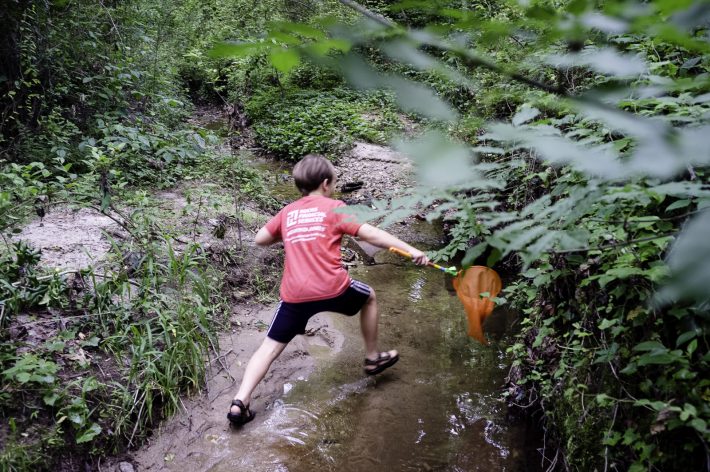
It seems like it would never work, but it does.
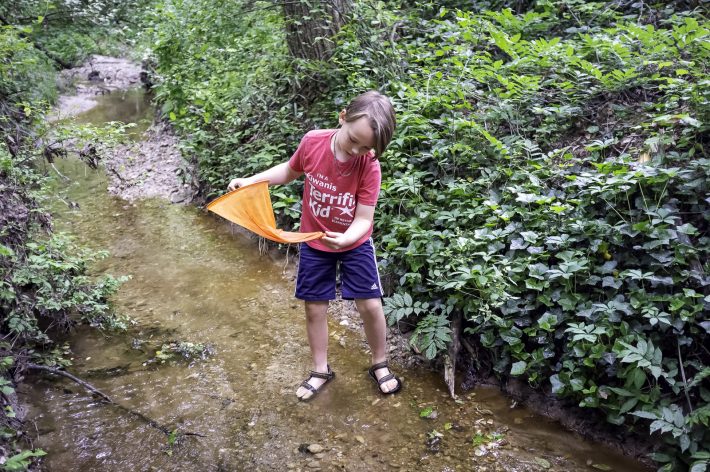
Occasionally, the minnows have caused a bit of consternation in the house. The first minnows he caught spent the night in a Mason jar on the kitchen counter. When K went down in the morning, one of the two minnows was floating on the surface of the water. Not wanting to risk the other’s life, K took the jar and sprinted down to the creek to release the survivor.

This prompted a new rule: minnows can be held in captivity until bedtime. When the Boy comes up for his bedtime ritual, the minnows need to be back in their own habitat. That worked for a couple of days until yesterday, when one of the minnows leaped out of the jar as it sat on the deck, flopped about on the deck board, then slipped in between two boards to its death in the leaves and chaos that exists under our deck.
“Minnow murderer!” the Girl exclaimed.
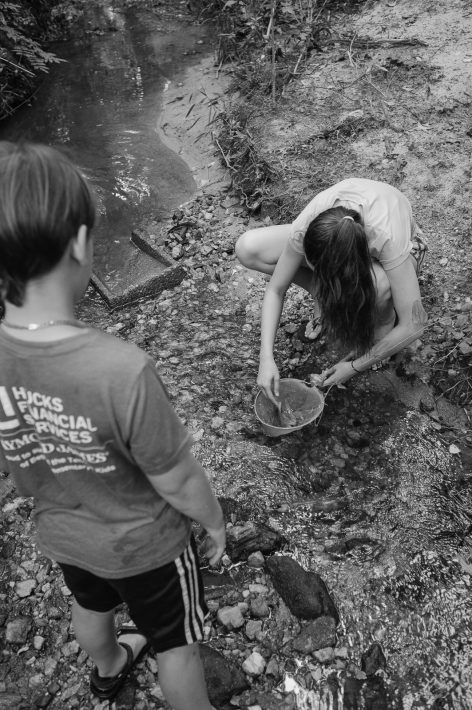
So now the jar stays in the house and minnows are released only moments after they’re caught.
Today, though, we discovered much more than minnows. During our afternoon session, we decided to head to the waterfall that’s just upstream. This means a short jaunt through the woods, approaching the stream from above. E started out toward the rocks and then suddenly started yelling.
“Daddy! Daddy! Come quick! It’s a snake! A snake! And it’s eating!” There was excitement and fear in his voice: he loves snakes, but he’s terrified of the thought of encountering a venomous one. He seems to think they’re conscious of their deadly venom and somewhat maleficent to boot. “What if they just chase me down and attack me?”

I try to reassure him when he says things like that, and today was no different: “Buddy, to him, you’re a huge, terrifying monster!”
“But how? They’re packed with venom.”
“They don’t know that.”
“They don’t?!” The Boy was having trouble comprehending that. How can a snake be so deadly and yet not realize its power?

I’m no snake expert to say the least, but I was fairly sure it wasn’t a venomous snake. The eyes, the shape of the head, its markings. But what about those markings? They’re awfully close to a cottonmouth’s markings except the dark triangles rest fat side on the belly of the snake — the whole pattern of this snake inverted.
Still, no need to take chances. We left the snake to its dinner and headed home.
I did a little research when we got home and came to the tentative conclusion that it might be a plain-bellied water snake, which is not venomous. Still, it got me thinking: what if it had been a cottonmouth and the Boy was bitten? Cottonmouths don’t have venom that kills humans, but it can make one very sick. But what about a little boy? We’ve tromped about those rocks where the snake was eating dinner countless times.

It was another one of those realizations that threats lurk around us constantly and we’re mostly unaware of them. Our current global reality is a reminder that we are far from the top dogs on the planet in a number of ways, and yet we’re the only species that could burn the whole thing to a radioactive cinder.
While I was cooking dinner over an open flame in our new fire pit, I listened to The Scarlet Letter again, and once again, an echo of the day:
Much of the marble coldness of Hester’s impression was to be attributed to the circumstance, that her life had turned, in a great measure, from passion and feeling, to thought. Standing alone in the world,—alone, as to any dependence on society, and with little Pearl to be guided and protected,—alone, and hopeless of retrieving her position, even had she not scorned to consider it desirable,—she cast away the fragments of a broken chain. The world’s law was no law for her mind. It was an age in which the human intellect, newly emancipated, had taken a more active and a wider range than for many centuries before. Men of the sword had overthrown nobles and kings. Men bolder than these had overthrown and rearranged—not actually, but within the sphere of theory, which was their most real abode—the whole system of ancient prejudice, wherewith was linked much of ancient principle. Hester Prynne imbibed this spirit. She assumed a freedom of speculation, then common enough on the other side of the Atlantic, but which our forefathers, had they known it, would have held to be a deadlier crime than that stigmatized by the scarlet letter. In her lonesome cottage, by the sea-shore, thoughts visited her, such as dared to enter no other dwelling in New England; shadowy guests, that would have been as perilous as demons to their entertainer, could they have been seen so much as knocking at her door.
Two hundred years had passed from the events of the book to the narration of the book, and in the meantime, the country had grown a little less Puritanical and a little more tolerant. Hawthorne seems to see some hope in this. Perhaps we all should

